NETSUKE showing an Okina dancer
Japan, late Edo period (1615-1868)
Lacquered wood
H. 5.7 ; L. 3.2 cm
A carved and lacquered wood netsuke depicting an Okina dancer wearing a white mask and holding a fan in his right hand.
The reverse is signed with the artist's kakihan - the monographic signature.
The use of netsuke refers to a very specific application: the kimono, a traditional Japanese garment, has no fastenings, button plackets or belt loops. Nor does it have any pockets. The obi, a wide ribbon of fabric tied with a knot, was used as a belt to keep the kimono closed. It was from the obi that the Japanese hung their inrō, a small box with compartments, which was used to carry everyday objects. The inrō had a cord that passed under the obi. The netsuke, attached to the end and placed above the upper edge of the belt, blocked the object. It thus acted as a cleat or counterweight.
Text and photos © FCP CORIDON
Ref : 5081


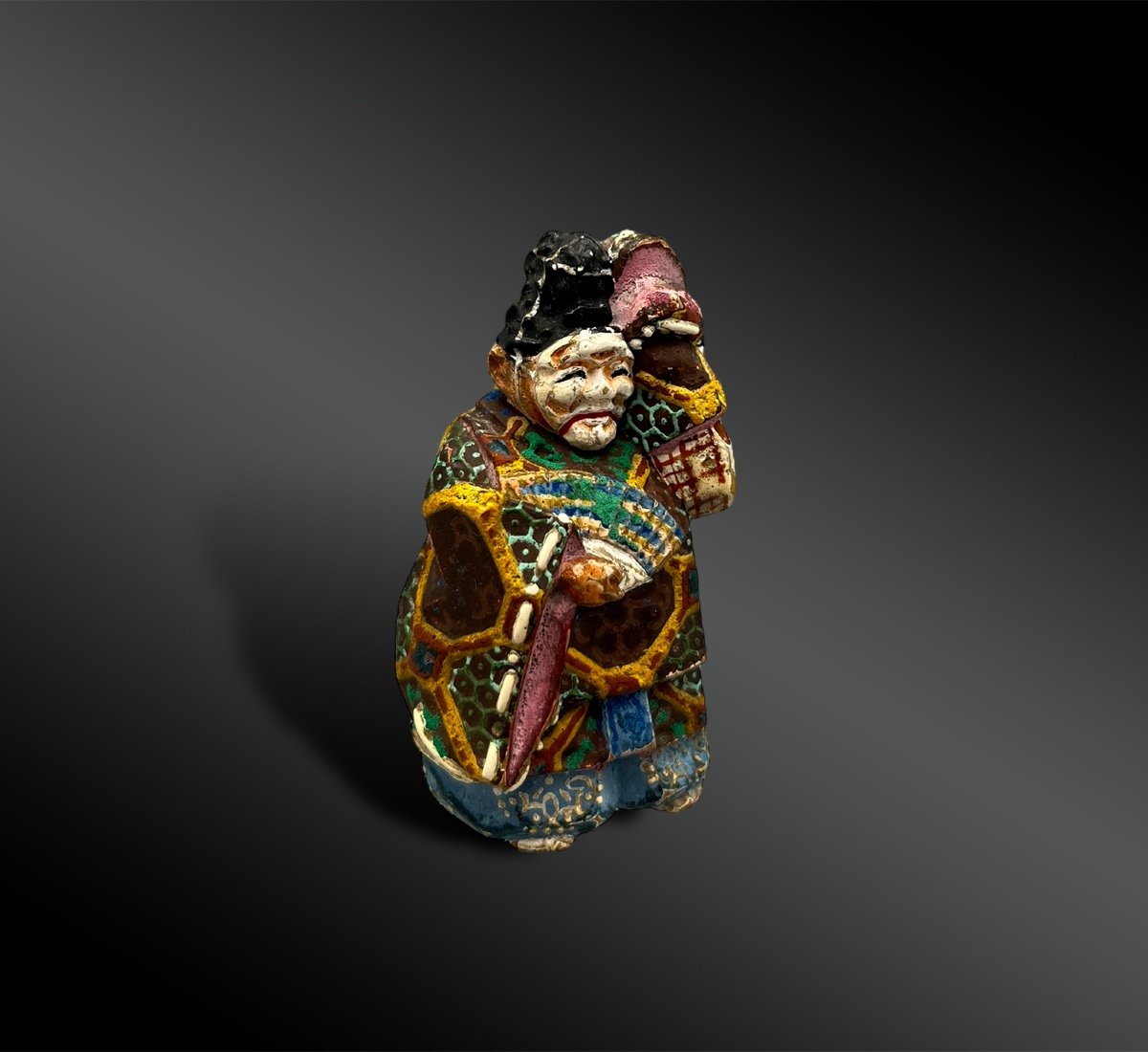
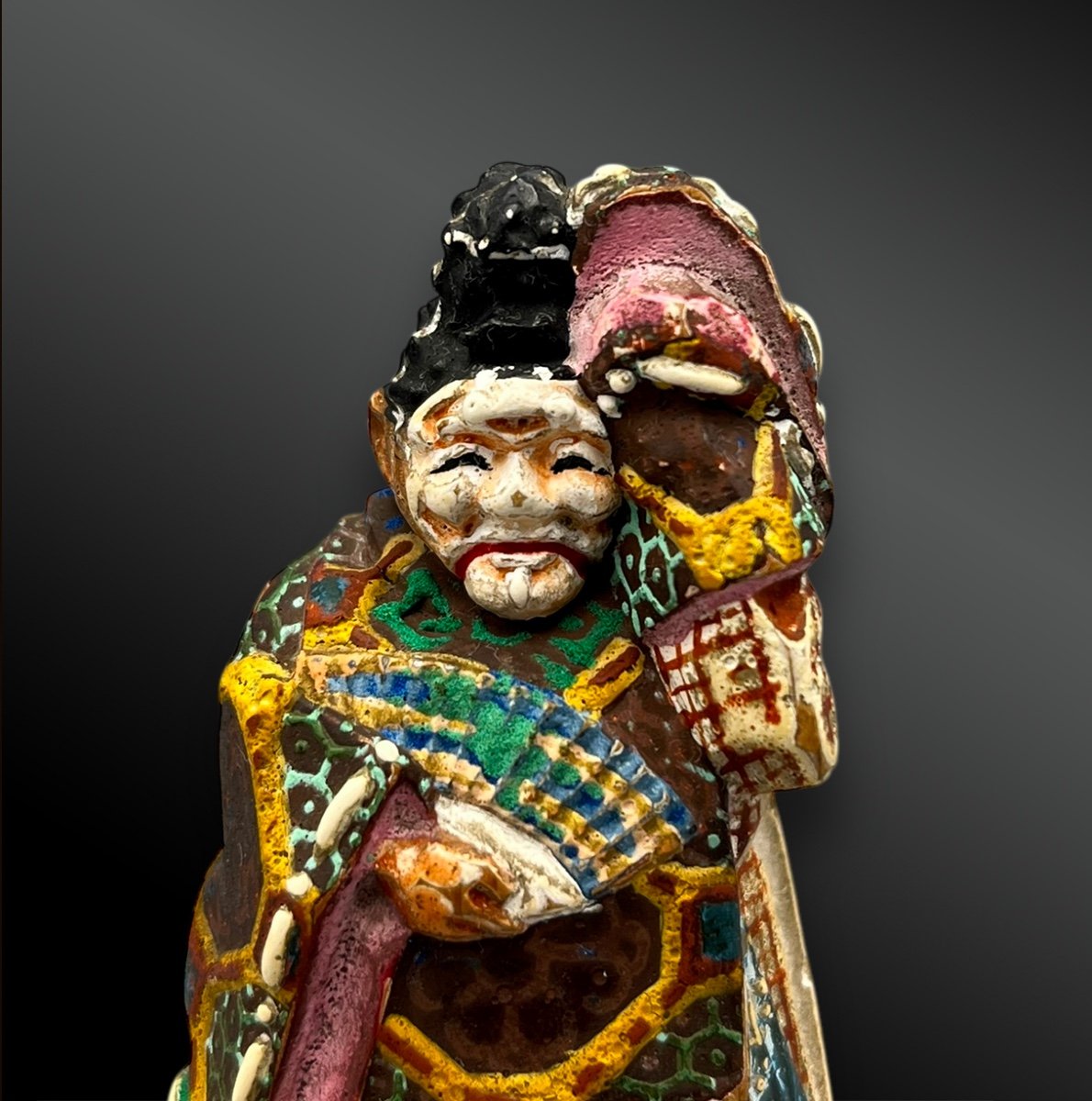
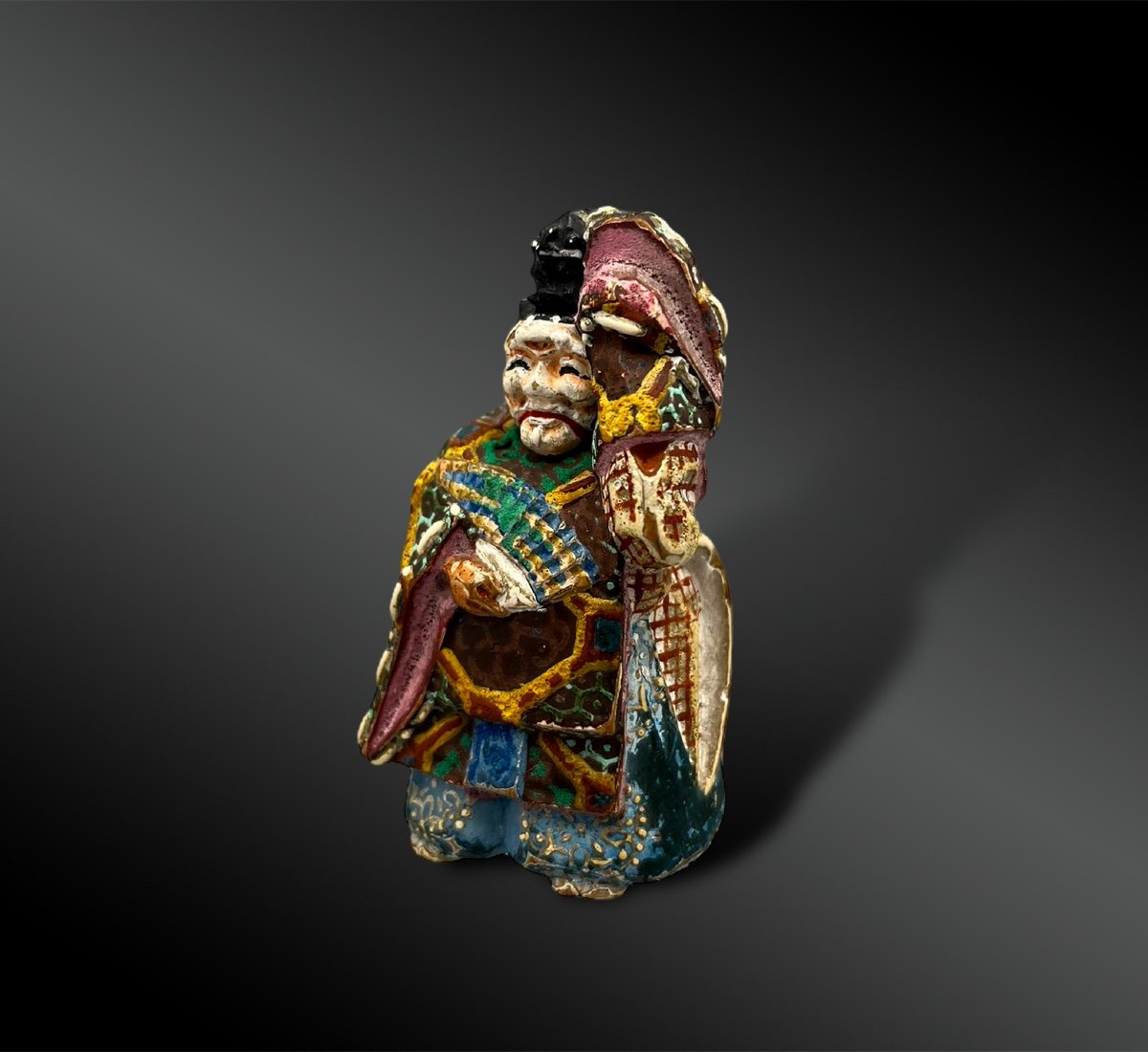
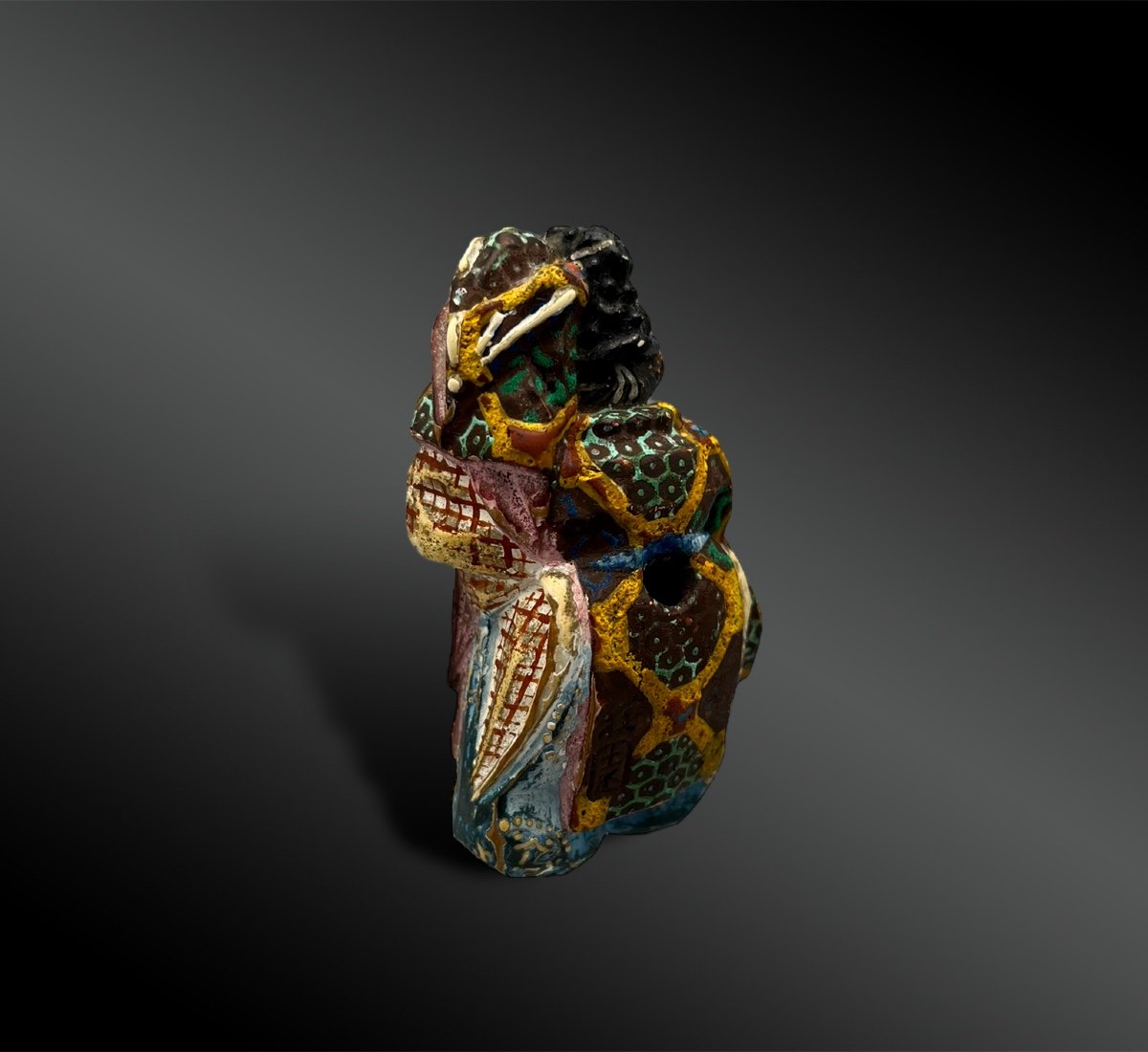

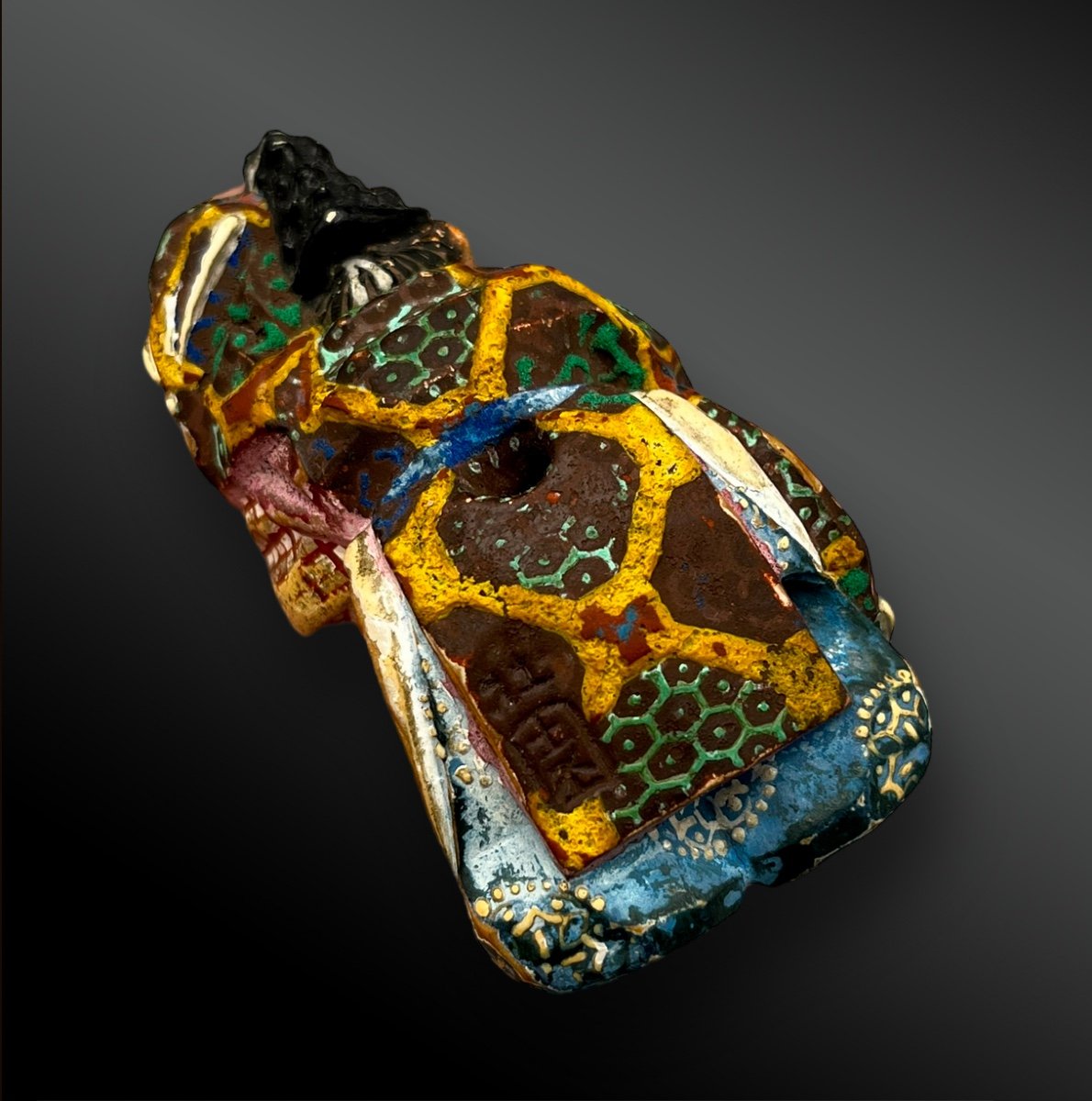







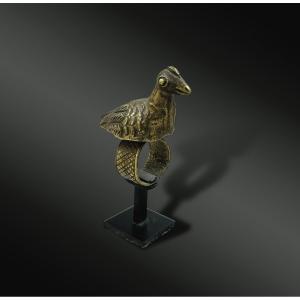
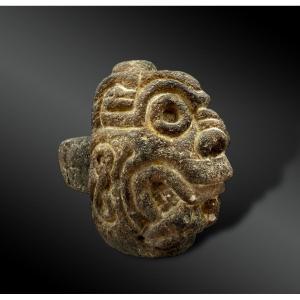





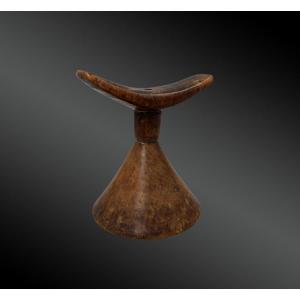




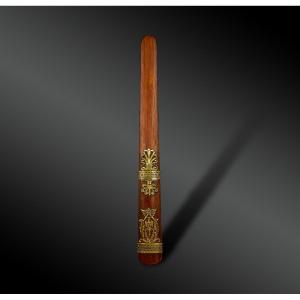


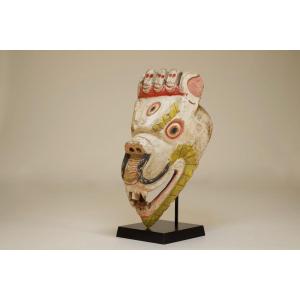
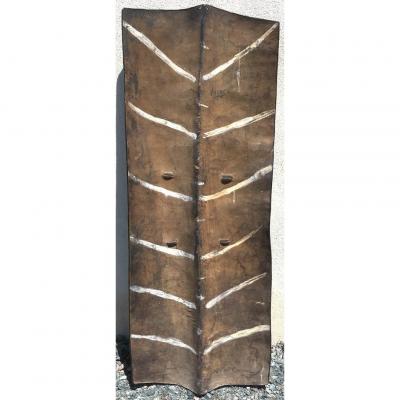

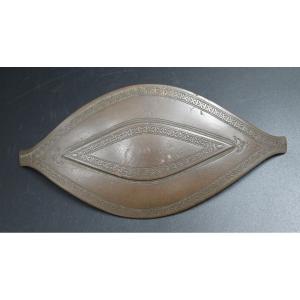




 Le Magazine de PROANTIC
Le Magazine de PROANTIC TRÉSORS Magazine
TRÉSORS Magazine Rivista Artiquariato
Rivista Artiquariato